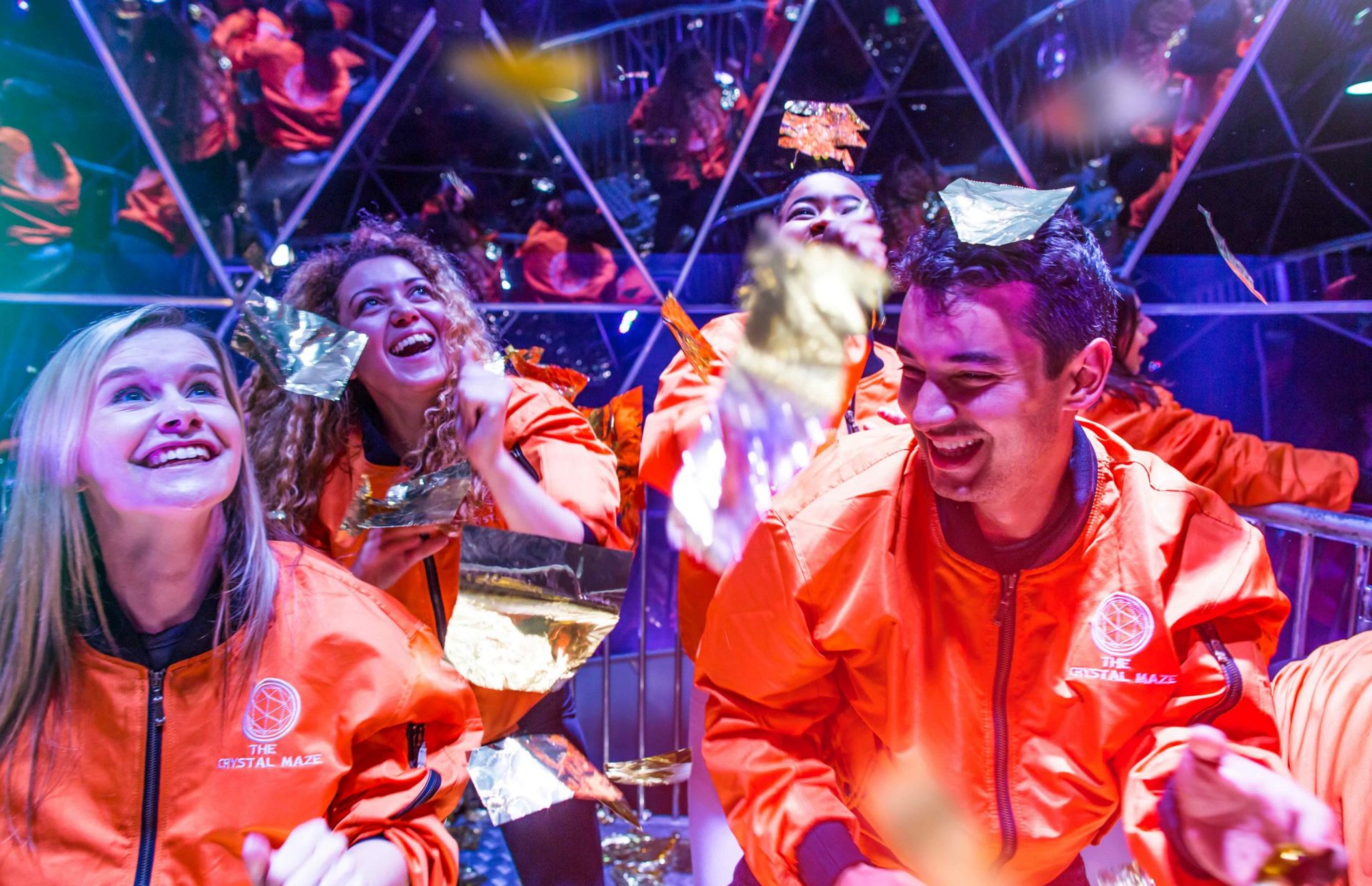We’re living in the Roaring Twenties once again. Human beings are social creatures – and post pandemic, our appetite to socialise has never been greater.
Enter competitive socialising, otherwise known as social entertainment. Human beings love to play games; they help us play, train, and socialise. And crucially, we don’t play on our own. So in the last 3-4 years, a brand new wave of social entertainment venues have been created to satiate our renewed appetite to play, eat and drink, and bond together. (For our early take on the trend, see Experience Trend Watch: Competitive Socialising.)
Unlike traditional bars or pubs, they’re not just for drinking and arguing, but instead form a compelling package that persuades us to spend not only our money, but our most important resource: time. They often reinvent traditional games – mini golf, bingo, darts, arcades, football, etc – by adding new technology, theming, and most importantly, great food and drink.
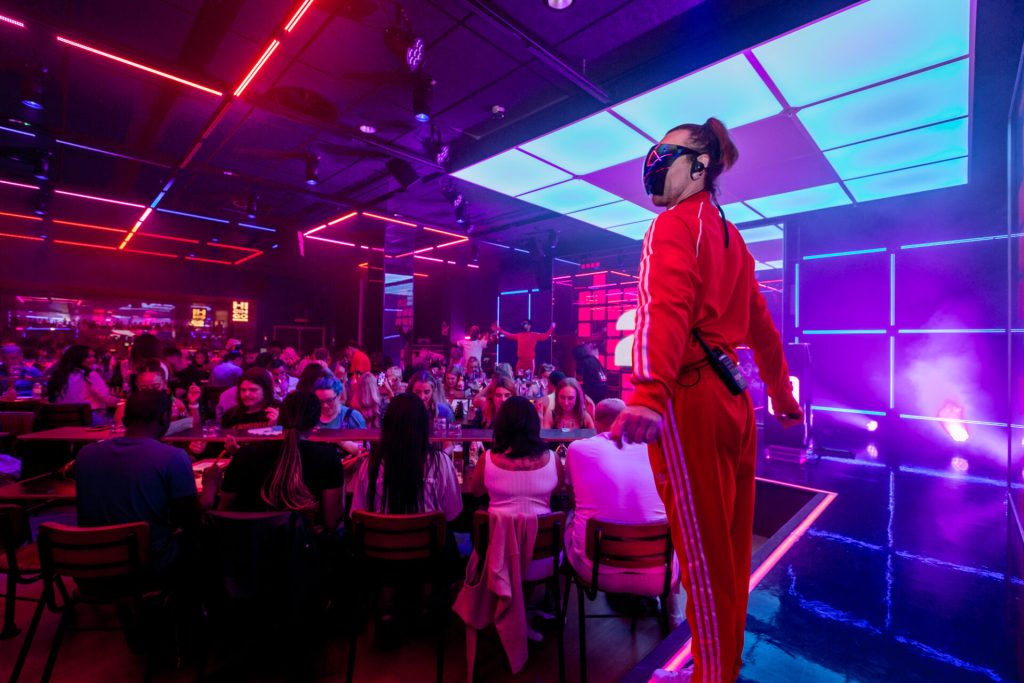
And these social entertainment venues are big business. They’re seeing major investment not only from F&B brands, who have deep pockets after Covid, but also in retail – see LeisurUp in Cannes, a business event focused on parachuting entertainment companies into retail venues, the expansion of British brands like Puttshack and Flight Club into the US, and the proliferation of the genre in new territories across the world, such as Holey Moley in Australia.
They’re also recession-resilient: audiences are prepared to show up for these venues, even in a financial downturn, if they can offer a good time for good value. Additionally, the immersive entertainment scene has now found its way into the location-based entertainment and social entertainment landscape. And the escape-room industry is looking to redefine itself just as social entertainment is taking off.
This all adds up to a perfect storm for social entertainment concepts. But in order to succeed and stick around, rather than explode like a brief, brilliant firework before crashing to the ground in pieces, you need investment, a good brand, and above all, to be unique – as well as a deep understanding of what makes the sector spin.
Kevin Williams, Co-Founder & Technology Director at Spider Entertainment and one of the specialist consultants in the international social entertainment scene, has developed a checklist to take you through this new land of opportunity and define the trends shaping the space.
An ex-Disney Imagineer with roots in arcade gaming, virtual reality and theme parks, his insights take us beyond the use of new technology to understand the wider adventure offered by immersive entertainment venues. Ready to take a swing?
1. It’s Not All About The Tech
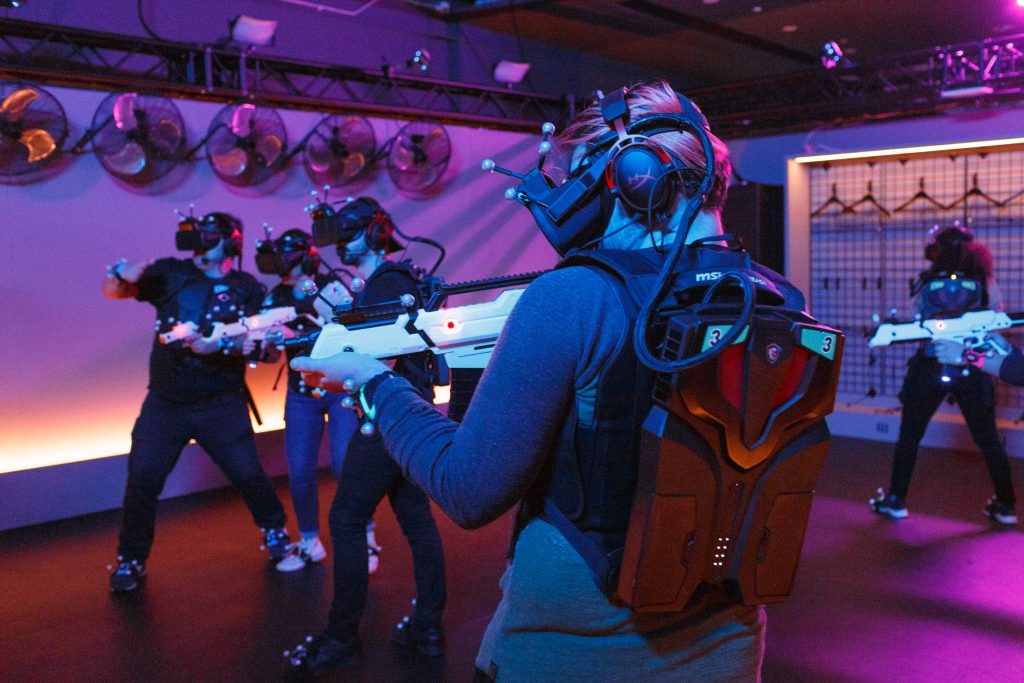
“Competitive socialising is not about skill. It is about socialising and fundamentally, it doesn’t need technology.”
Kevin Williams
Technology is often an important part of a social entertainment venue – think of Puttshack’s mini-golf courses that digitally track balls, VR concepts like Sandbox VR, Electric Shuffle’s souped-up version of shuffleboard, and the use of augmented reality and projection mapping to make cheating more difficult and keeping the score easier in concepts like Flight Club or Metrix.
However, the key element to their success isn’t technology, but socialising. Socially entertaining games from bowling to go karting are being given the competitive socialising treatment by being gamified, put into an experience facility and accompanied by great food and drink. When we look at early UK innovators in the space like Hollywood Bowl, they’re less about your score and more about cocktails, enjoyment, generating FOMO, and creating selfie moments.
2. Live Entertainment Has Its Part To Play
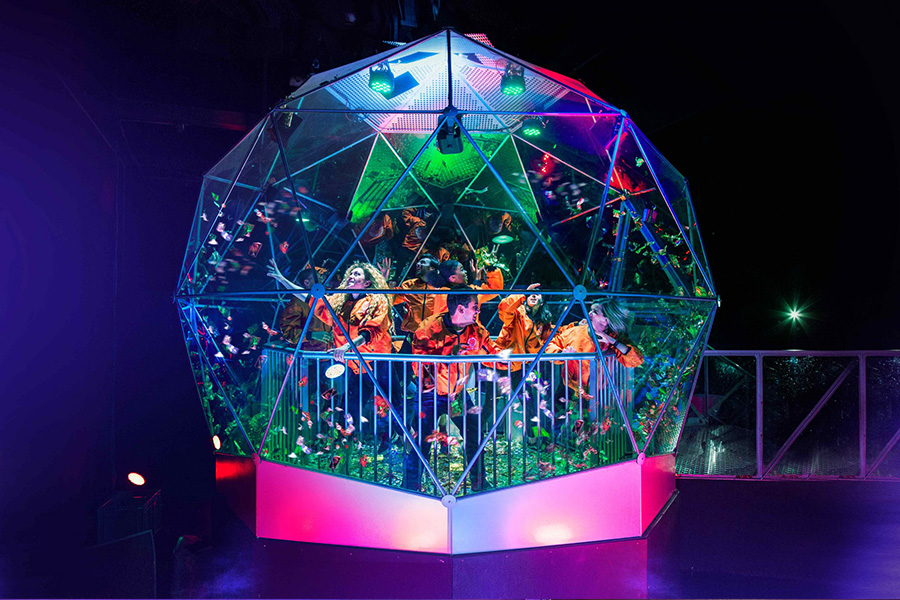
“Cast members are essential to help get people through the experience. Gamemasters are essential to help people navigate the escape room.”
Kevin Williams
The live entertainment genre is now beginning to move into social entertainment – see Mamma Mia! The Party at London’s o2, which brings the movie-musical to life with food, drink and live actors, The Crystal Maze Live Experience, which adopts the framework of the popular TV show with escape-room elements and a real gamesmaster, and Monopoly Lifesized, which also has a live cast.
These actors help people get through the experience seamlessly. We’re now seeing a mixture of the escape room and social entertainment environments in the “mission room” experiences being developed in the US. Experience creators used to working in the immersive environment will have a big part to play in this next evolution.
3. Think Like A MULE, Not An FEC
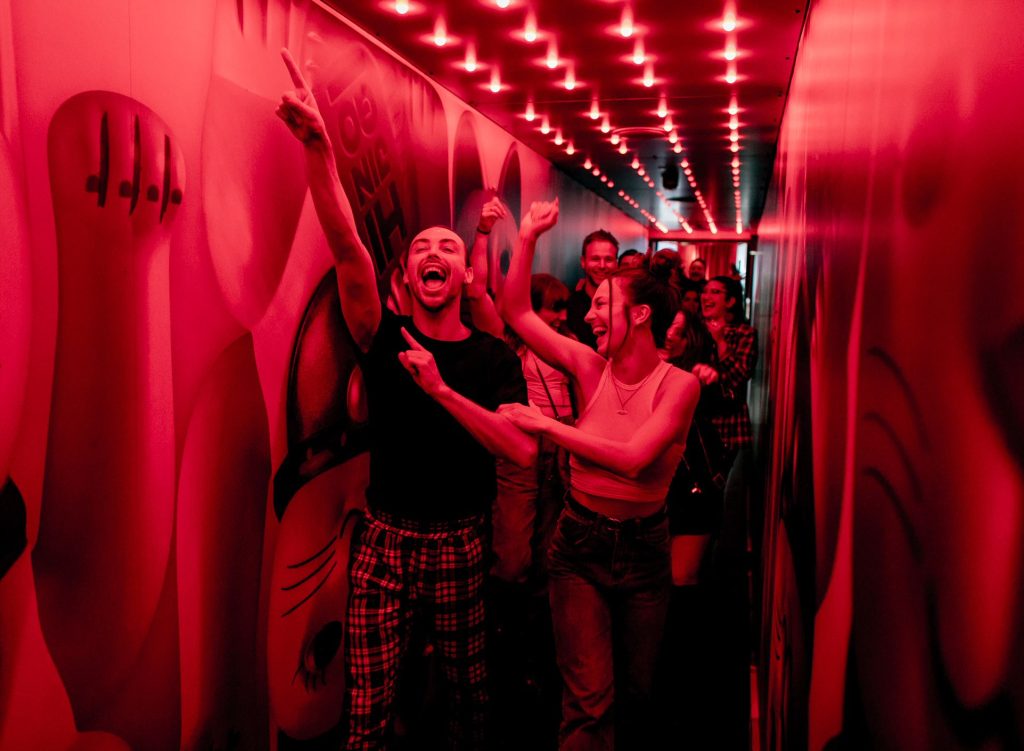
“These social entertainment experiences are more socially inclusive than FECs: they’re a bit off the cuff, a bit boutique, and a bit let your hair down.”
Kevin Williams
Social entertainment venues offer a different experience to Family Entertainment Centers (FECs). They’re not aimed at children and parents, but more young adults, teenagers and “kidults”, and are often not family friendly, especially if there’s alcohol involved. Perhaps they might use “sunsetting” and digital tweaks to change the environment from kid-friendly in the morning to adults-only after dark. For this reason, Williams prefers to call them Mixed Use Leisure Entertainment, or MULEs.
4. Could IP Be Magic?
“Some people use IP as a plaster on a broken leg. But using an IP means you pay 60% to the IP owner on a recurring basis and if they get sick of it or want to open up their own, you’re done. Original IP is yours.”
Kevin Williams
Popular licenses such as Stranger Things, Avatar and The Walking Dead are all waking up to the possibilities of social entertainment, taking their IP, gamifying it and adding themed bars and food. Netflix has announced that it’s opening its own experience facilities, and Sony, Disney and Universal are also getting wise to the idea.
However, while adopting theming from an existing popular IP might help generate initial interest in your idea, Williams warns against it in the long term. Using someone else’s IP means jumping through hoops about how and when to use it, and risking them ending your facility when it no longer suits them – or worse, opening their own.
5. Social Entertainment Is A Repeat Visitation Environment
“We’re not a theme park: we’re not expecting someone to come once and never come back again. Nothing is set in stone. Everything is flexible.”
Kevin Williams
Social entertainment is all about the repeat interest. This is why the element of competition is essential: if you get a score and win prizes, you’ll come back for more to try and better it. The new digital screens also allow us to switch out environments for different occasions, festivals or customers. We can now immerse people in a new environment at the click of a mouse without having to rely on a clunky head-mounted display. The recent U2 concert at Las Vegas’s Sphere gives a glimpse of the possibilities that big screens might provide when creating a compelling live entertainment experience.
6. The Four Rules Of Revenue Generation
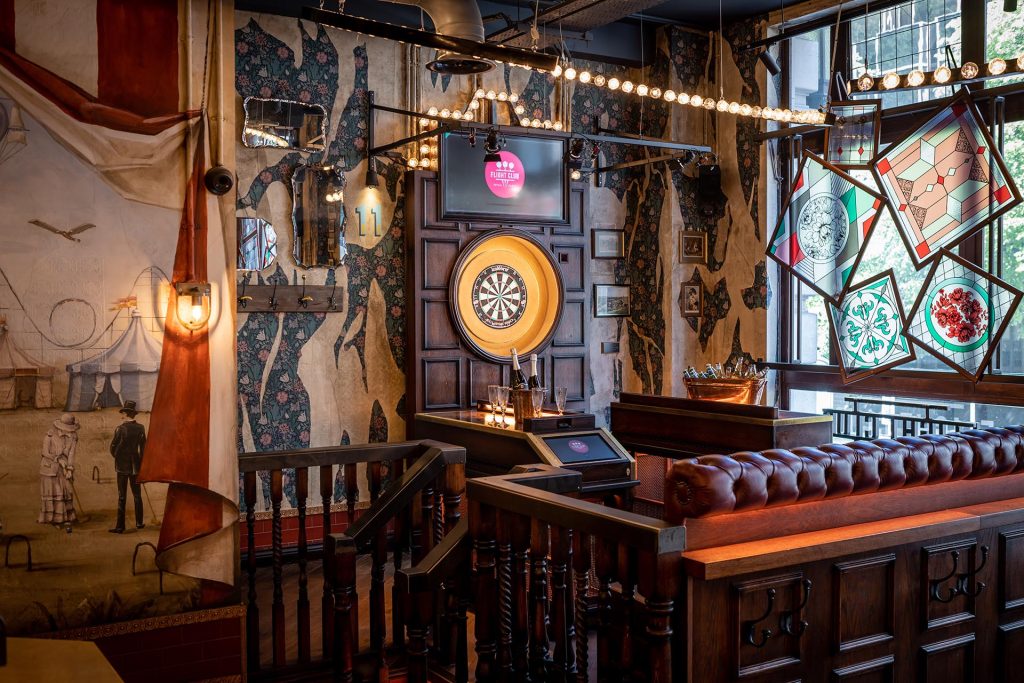
When building out a social entertainment concept with longevity, Williams has four rules of revenue generation to remember:
- Reserving time in the facility and creating an avatar. It’s important to follow the guest journey from search to landing on the website to booking, making sure that you create a compelling reason to sign up and that they have a discount and details to share.
- Consuming the product while there. This includes “purchase goals” such as food and drink, novelty or special items, and collectibles that are worth purchasing and having, as opposed to “perchables” (such as novelty sunglasses) that are more disposable and have less value. When it comes to F&B, it’s not about having star chefs and many concepts will have food trucks or stalls, like London’s Fairgame.
- Repeat visitation. This means generating a score linked to their avatar, which they need a subscription model to keep on generating. Watch parties and private events offer another way to encourage return visits.
- Prizes, special deals, and discounts for seasonality. A free branded picture
7. What’s In Your Experience Cocktail?
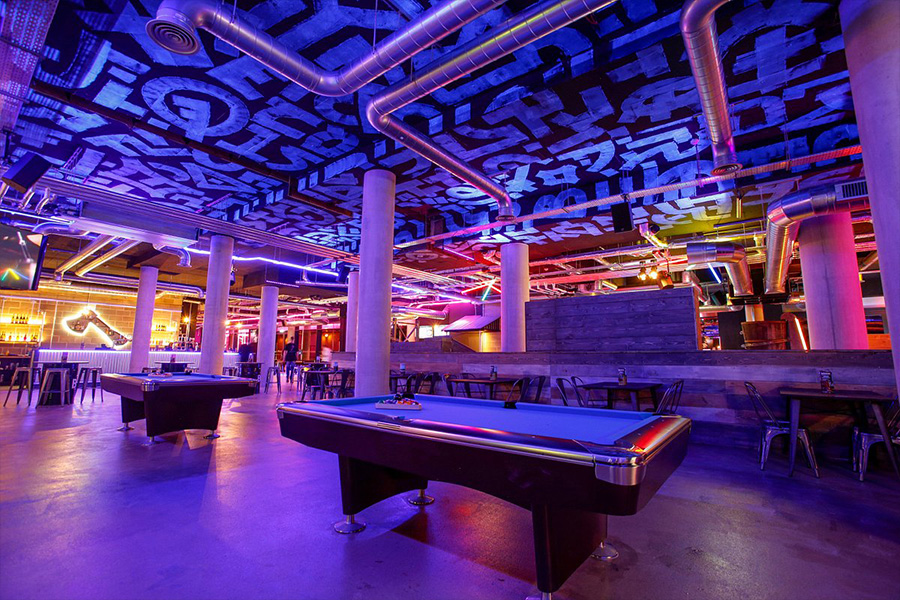
“It isn’t about the technology, but the technology glues it together. It isn’t about the licensing, but the licensing makes the marketing sing. It isn’t about the human beings, but the human beings are the people we’re attracting – and humans go where fun humans hang out.”
Kevin Williams
The success of your social entertainment concept depends on taking a bit of all of the above and combining it in a “fantastic cocktail”. For example, Boom Battle Bar was recently acquired by the escape-room company XP Factory, and has now added junkyard golf, beer pong, AR axe throwing, karaoke booths and escape-room booths with themed IP to its offering.
The WXO Take-Out
We might all represent different sectors of the Experience Economy, but many of the elements that define the new and growing sector of social entertainment are common to the creation of any great experience. For example, that technology is never the point, but only an enhancement to the narrative. Or that the human touch, through actors and cast members, is crucial to guide people through an experience.
In other words, it’s not one thing that makes a great social entertainment experience, but many things brought together well. The skills we have as experience creators, designers, developers, gamemasters and so on will be vital as the genre develops. And as Williams says:
“If you’re not thinking about this as a component for an existing entertainment opportunity, you’re missing out.”
Kevin Williams
So next time you’re designing an experience, ask yourself:
- What’s the “cocktail” in your work?
- Is competitive socialising right for everyone?
- Will digital tech drive live entertainment?
Want to come to live Campfires and join fellow expert experience creators from 39+ different countries as we lead the Experience Revolution forward? Find out more here.

